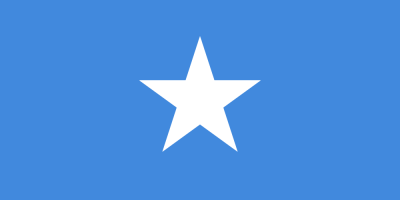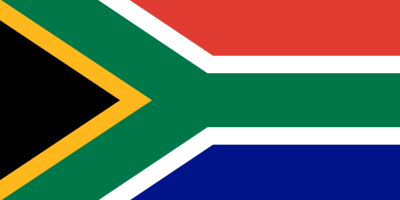Uganda flag color codes is rich in symbolic meaning and bold in its color scheme. With stripes of black, yellow, and red intersected by a white disc, the Uganda flag color codes tell an important story. In this article, we will explore the specific Uganda flag color codes in HTML HEX, RGB, PANTONE, HSL, CMYK, HWB, and NCOL formats. Understanding the distinct shades used in the Uganda flag color codes provides deeper insight into this African nation’s history and aspirations. From the bold black stripe signifying the African people, to the red evoking the bloodshed during independence, the colors of the Uganda flag color codes carry deep significance.
Table of Contents
What are the colors of Uganda flag?
The colors of the Uganda flag are:
- Black – Represents the African people
- Yellow – Symbolizes the sunshine and natural resources in Uganda
- Red – Stands for brotherhood and the blood shed during the struggle for independence
- White – Signifies peace and unity
The black, yellow, and red stripes run horizontally across the flag. The white circle is in the center of the flag, overlapped on the stripes.
Uganda flag color codes & Color Names:
BLACK
| Color Model | Value |
|---|---|
| HTML | #000000 |
| HEX | 0,0,0 |
| RGB | rgb(0,0,0) |
| PANTONE | Black |
| HSL | hsl(0, 0%, 0%) |
| CMYK | 0%, 0%, 0%, 100% |
| HWB | hwb(0, 0%, 100%) |
| NCOL | N/A |
YELLOW
| Color Model | Value |
|---|---|
| HTML | #FFD100 |
| HEX | 255,209,0 |
| RGB | rgb(255,209,0) |
| PANTONE | Yellow C |
| HSL | hsl(51, 100%, 50%) |
| CMYK | 0%, 18%, 100%, 0% |
| HWB | hwb(51, 0%, 0%) |
| NCOL | N/A |
RED
| Color Model | Value |
|---|---|
| HTML | #EF3340 |
| HEX | 239,51,64 |
| RGB | rgb(239,51,64) |
| PANTONE | 1797 C |
| HSL | hsl(356, 85%, 57%) |
| CMYK | 0%, 79%, 73%, 6% |
| HWB | hwb(356, 6%, 6%) |
| NCOL | N/A |
WHITE
| Color Model | Value |
|---|---|
| HTML | #FFFFFF |
| HEX | 255,255,255 |
| RGB | rgb(255,255,255) |
| PANTONE | White |
| HSL | hsl(0, 0%, 100%) |
| CMYK | 0%, 0%, 0%, 0% |
| HWB | hwb(0, 100%, 0%) |
| NCOL | N/A |
What is the meaning of colors in the Uganda flag?
The colors in the Uganda flag represent:
Black – Signifies the African people of Uganda. It represents their skin color as well as their struggles under colonial rule.
Yellow – Stands for the sunshine and wealth of natural resources in Uganda. It also represents the country’s equatorial location.
Red – Symbolizes brotherhood and the blood shed by Ugandans during their fight for independence. It also reflects the valor and zeal of Ugandans.
White – Represents peace and unity amongst all Ugandans. The white disc in the center emphasizes unity as the central guiding principle of progress in the country.
Additionally, the black, yellow and red stripes echo the colors of the Pan-Africanist movement, demonstrating Uganda’s African identity and solidarity. Together, the colors emphasize Uganda’s aspirations for unity, freedom, prosperity and peace.
Explore More Flag Colors:
FAQs: Frequently Asked Questions:
Is Uganda a rich or poor country?
Uganda is generally considered a lower-middle-income country. Its economy has been growing steadily in recent years, and the country has made progress in various sectors. However, poverty remains a significant challenge, and there are disparities in wealth distribution.
It’s important to note that economic conditions can change, and it’s advisable to check more recent sources for the latest information on Uganda’s economic status. Factors such as government policies, global economic trends, and other external influences can impact a country’s economic situation.
Why is Uganda famous?
Uganda is famous for several reasons, and here are some key aspects that contribute to its recognition:
Gorilla Trekking: Uganda is known for its mountain gorilla population, particularly in the Bwindi Impenetrable National Park and Mgahinga Gorilla National Park. Gorilla trekking has become a popular and unique tourist attraction, drawing visitors from around the world.
Wildlife and Safaris: The country boasts diverse landscapes and a rich variety of wildlife. Visitors can explore national parks such as Queen Elizabeth National Park, Murchison Falls National Park, and Kidepo Valley National Park to experience safaris and see a wide range of animals and bird species.
Source of the Nile: The White Nile, one of the two main tributaries of the Nile River, originates from Lake Victoria in Uganda. Jinja, a town in Uganda, is often referred to as the “Source of the Nile,” attracting tourists interested in exploring this historical and geographical landmark.
Cultural Heritage: Uganda is home to a variety of ethnic groups, each with its own unique cultural practices, traditions, and languages. The country’s cultural diversity is celebrated through music, dance, art, and festivals.
Is Uganda a cheap country?
Uganda is often considered an affordable destination for travelers, and the cost of living is generally lower compared to many Western countries. However, the perception of whether Uganda is “cheap” can depend on various factors, including individual spending habits, travel preferences, and the specific locations visited within the country.
Here are some factors to consider regarding the cost of living and travel expenses in Uganda:
Accommodation: Accommodation options in Uganda can range from budget hostels and guesthouses to luxury hotels. Generally, there are affordable lodging options available for budget-conscious travelers.
Transportation: Public transportation, such as buses and matatus (shared taxis), is relatively inexpensive. Private transportation, such as taxis, can also be affordable compared to Western countries. Domestic flights within Uganda may add to travel expenses.
Food: Street food and local markets offer affordable dining options. Eating at local restaurants and trying Ugandan cuisine can be cost-effective. However, upscale restaurants and international cuisine may be more expensive.
Activities and Tours: Entrance fees to national parks, wildlife reserves, and tourist attractions are usually reasonable. Costs for guided tours, especially for activities like gorilla trekking, can be higher.
Currency Exchange: The local currency is the Ugandan Shilling (UGX). Currency exchange rates can impact the purchasing power of foreign currencies, affecting the overall cost for travelers.
What are 5 interesting facts about Uganda?
Source of the Nile: Uganda is home to the source of the White Nile, one of the two main tributaries of the Nile River. The town of Jinja, located on the shores of Lake Victoria, is often referred to as the “Source of the Nile.” This geographical landmark attracts tourists interested in the origins of one of the world’s longest rivers.
Mountain Gorillas: Uganda is renowned for its mountain gorilla population, and it is one of the few countries where you can go gorilla trekking. Bwindi Impenetrable National Park and Mgahinga Gorilla National Park are two key locations where visitors can experience close encounters with these critically endangered primates.
Lake Victoria: Uganda shares Lake Victoria, the largest lake in Africa, with neighboring countries Kenya and Tanzania. The lake is not only a significant geographical feature but also a vital resource for fishing and transportation in the region.
Cultural Diversity: Uganda is characterized by a rich cultural diversity with more than 50 different ethnic groups. Each group has its own distinct traditions, languages, and customs. This cultural variety is celebrated through music, dance, art, and various festivals.
Winston Churchill’s “Pearl of Africa”: The term “Pearl of Africa” was famously used by Sir Winston Churchill to describe Uganda. Churchill was captivated by the country’s lush green landscapes, diverse wildlife.
Is it safe in Uganda?
I don’t have real-time information, as my knowledge was last updated in January 2022. Safety can vary depending on the region and current circumstances. It’s essential to check the latest travel advisories from reliable sources such as government travel websites or consult with local authorities and residents for up-to-date information on the safety of specific areas in Uganda.
Additionally, consider factors such as political stability, health concerns, and any recent events that may affect safety. Always exercise caution, stay informed, and take necessary precautions when traveling to any destination.
Is it safe to go to Uganda?
safety conditions can change, and it’s important to check the most recent travel advisories before planning a trip. Here are a few general tips to ensure a safe visit:
Check Travel Advisories: Consult your government’s travel advisory website for the latest information on safety and security in Uganda.
Health Precautions: Be aware of health concerns, such as vaccinations and any current outbreaks. It’s advisable to consult with a healthcare professional before traveling.
Local Customs and Laws: Familiarize yourself with local customs and laws to ensure you respect the cultural norms and avoid legal issues.
Secure Your Belongings: Like in any destination, be mindful of your belongings and take precautions against petty theft.
Why do people love Uganda?
People may have various reasons for loving Uganda, and these can be subjective and diverse. Here are several aspects that contribute to the appreciation of Uganda by many:
Natural Beauty: Uganda is known for its stunning landscapes, including the diverse ecosystems of the Rwenzori Mountains, the source of the Nile River, and the vast Lake Victoria. The country is rich in biodiversity, offering opportunities for wildlife safaris and bird watching.
Warm and Friendly People: Ugandans are often praised for their hospitality and friendliness. Visitors often appreciate the warm welcome they receive from locals, making their experience more enjoyable.
Cultural Diversity: Uganda is home to a variety of ethnic groups, each with its own distinct culture, traditions, and languages. Visitors may find the cultural diversity fascinating and enriching.
Gorilla Trekking: Bwindi Impenetrable National Park is renowned for its mountain gorilla population. Gorilla trekking is a unique and memorable experience, attracting wildlife enthusiasts and conservationists from around the world.
What can I buy in Uganda?
Uganda offers a variety of unique and locally produced items that make for great souvenirs or gifts. Here are some things you can consider buying in Uganda:
African Crafts and Artwork: Uganda is known for its vibrant arts and crafts. Look for handmade items such as traditional masks, batiks, beadwork, and sculptures crafted by local artisans.
Bark Cloth Products: Bark cloth is a traditional Ugandan material made from the inner bark of the mutuba tree. It is used to create clothing, bags, and other accessories.
Basketry and Weaving: Handwoven baskets and mats are popular items in Uganda. They come in various sizes and designs and are often made from natural materials.
Batik Fabric: Batik is a traditional method of dyeing fabric, and you can find colorful batik fabrics in markets. These can be used for clothing, home decor, or as wall hangings.
Coffee and Tea: Uganda is known for its coffee production. Consider buying locally grown and processed coffee beans as a souvenir. Ugandan tea is also a popular export.
Crafted Jewelry: Handmade jewelry, often incorporating local beads and materials, is widely available. Look for necklaces, bracelets, and earrings crafted by local artisans.
Traditional Instruments: If you’re interested in music, consider buying traditional Ugandan musical instruments such as drums, thumb pianos (kalimbas), or harps.
Kikoy Fabric: Kikoy is a traditional East African fabric that can be used as a wrap, beach towel, or scarf. It comes in various colors and patterns.
Traditional Clothing: You can purchase traditional Ugandan clothing, including gomesi (a women’s dress) or kanzu (a men’s robe). These garments are often worn during special occasions.













